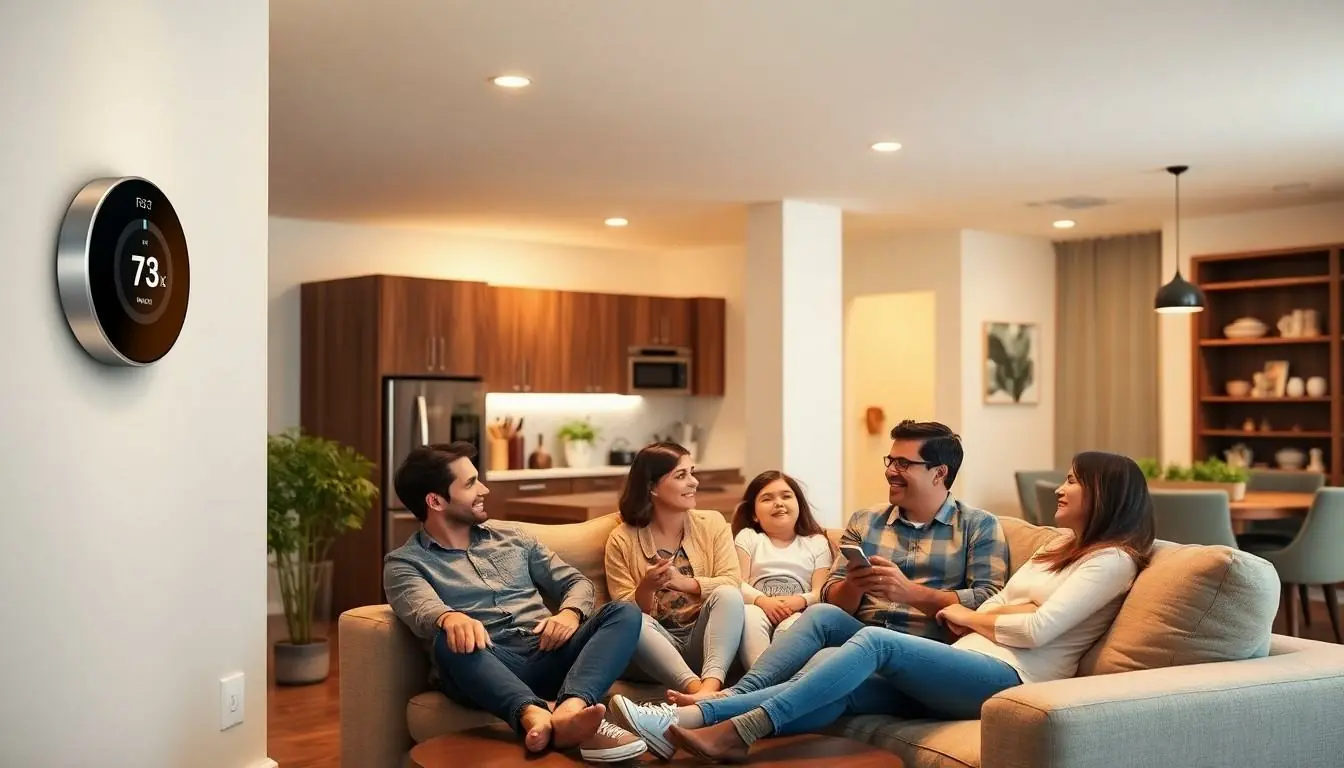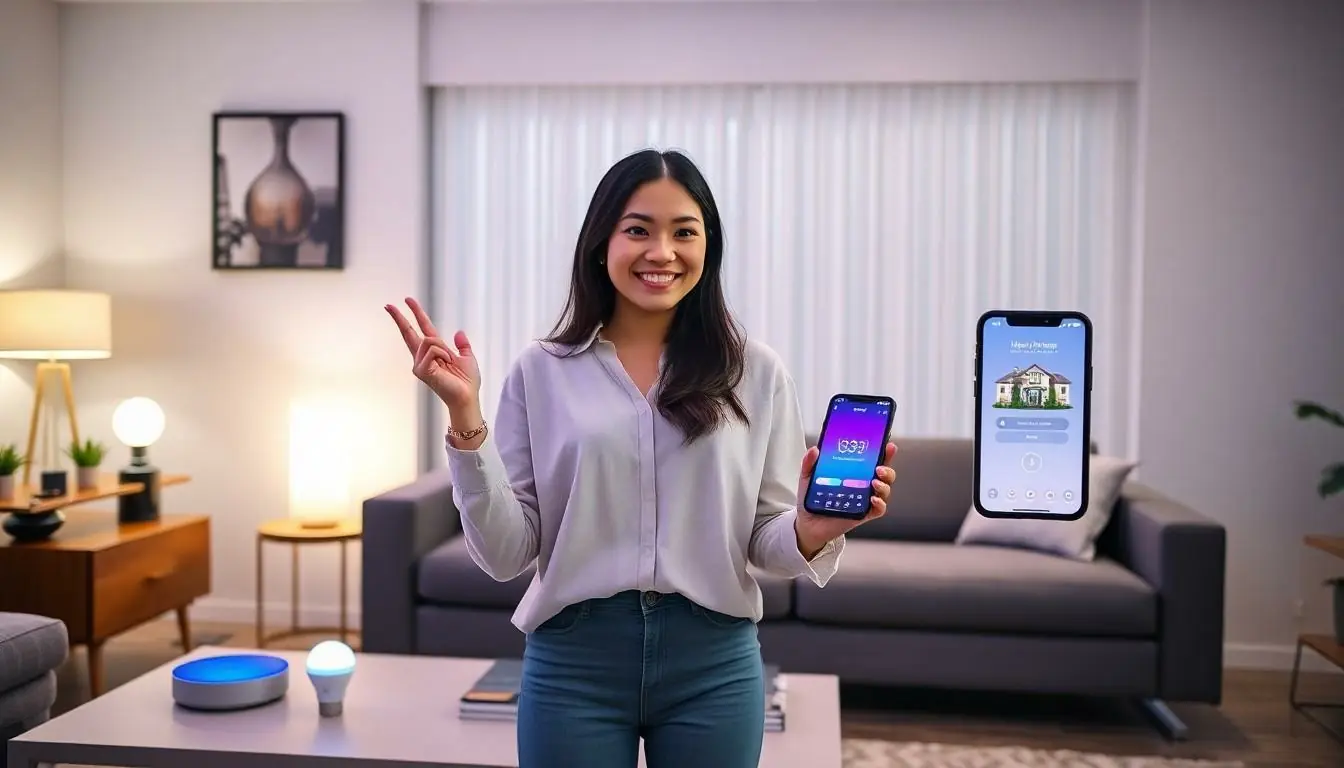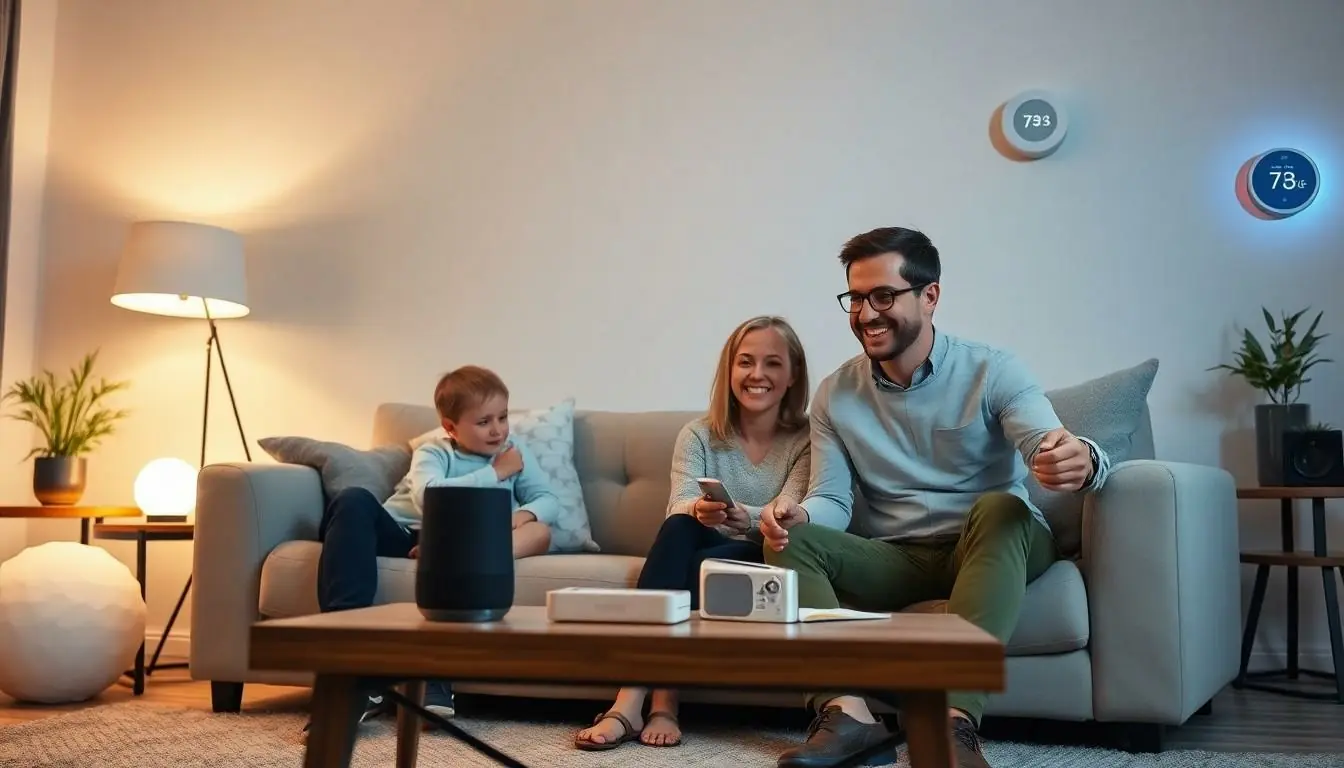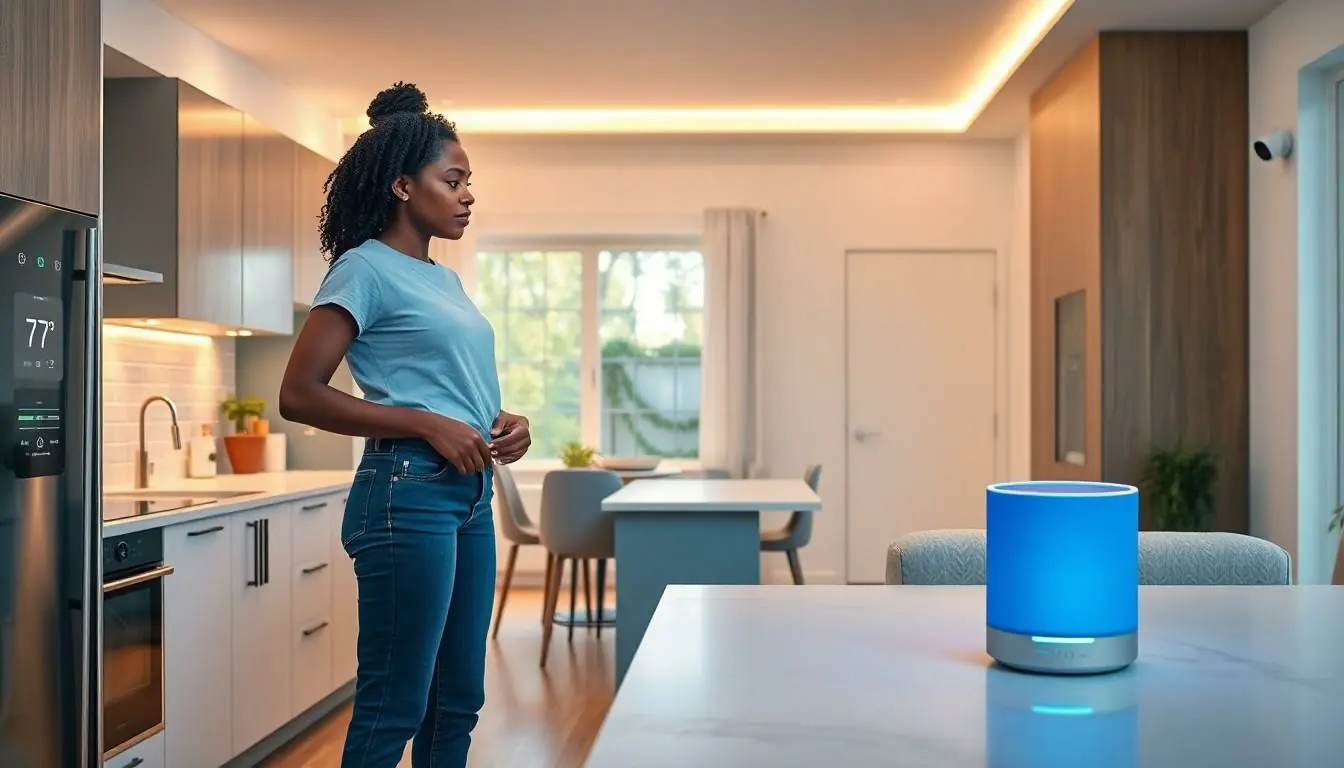Imagine a home that thinks for itself—lights that dim when you settle in for a movie, a thermostat that knows just how warm you like it, and even a fridge that reminds you to buy milk. Welcome to the world of smart homes, where technology meets everyday living in ways that are both convenient and downright fun.
Gone are the days of fumbling for light switches or struggling with the thermostat. With smart home devices, he or she can control nearly every aspect of their living space with just a tap or a voice command. It’s like having a personal assistant who doesn’t need coffee breaks. As we dive into the fascinating realm of smart homes, it’s time to discover how these innovations are transforming the way people live, work, and play.
Table of Contents
ToggleUnderstanding Smart Homes
Smart homes integrate technology to enhance comfort and convenience in daily living. These residences offer users seamless control over various aspects of their environment.
Definition of Smart Homes
Smart homes refer to residences equipped with devices that connect to the internet and communicate with each other. These devices automate various tasks, enhancing the functionality of the home. Technology enables features like remote monitoring and increased energy efficiency. Smart homes can include lighting, security systems, and climate control, all accessed through smartphones or voice-activated assistants. This connectivity allows homeowners to manage their living spaces from anywhere, promoting efficiency and ease.
Key Features of Smart Homes
Smart homes boast several key features that make day-to-day living smoother. Automation systems provide consistent control over devices, ensuring they function as intended. Security systems offer real-time alerts and remote monitoring to enhance safety. Energy management tools enable homeowners to track usage and optimize consumption, resulting in lower utility bills. Interconnectivity allows devices to interact, creating a cohesive home experience. Voice recognition technology simplifies interaction, providing hands-free control over multiple devices.
Benefits of Smart Homes

Smart homes offer numerous benefits that significantly improve everyday living. These advantages span convenience, energy efficiency, and enhanced security.
Convenience and Comfort
Smart homes simplify daily tasks, making life more manageable. Automated systems adjust lighting and temperatures based on user preferences. Voice commands allow for easy control of devices, eliminating the need for manual adjustments. Smart appliances, such as refrigerators, provide notifications about expiration dates or suggested recipes. These functionalities create a seamless living experience that promotes comfort and relaxation.
Energy Efficiency
Smart homes contribute to energy savings, optimizing electricity usage. Smart thermostats learn user schedules, adjusting temperature settings to reduce waste. Energy monitoring tools track usage patterns, helping occupants identify high consumption areas. Automated lighting systems turn off when no one is present, providing further savings. Collectively, these energy management features lead to lower utility bills and a reduced carbon footprint.
Enhanced Security
Security systems in smart homes offer real-time monitoring and alerts. Smart cameras and doorbells provide visual oversight of entrances and yards, ensuring constant vigilance. Remote access allows homeowners to check on their property from anywhere, adding peace of mind. Automated locks enhance security by enabling users to manage entry points remotely. These innovations create a secure environment for families, promoting safety and reassurance.
Technology Behind Smart Homes
Smart homes utilize advanced technology to enhance living experiences through automation and connectivity. This technology primarily revolves around two crucial components: smart devices and home automation systems.
Smart Devices and IoT
Smart devices serve as the building blocks of smart homes. These internet-connected gadgets, including smart speakers, cameras, and light bulbs, communicate seamlessly with each other. A smart thermostat can adjust temperature settings based on user habits. Cameras enable real-time monitoring through smartphones. Users can also control lighting remotely with smart bulbs, providing convenience and energy savings. Integration with IoT technology enables devices to respond intelligently to commands, transforming daily tasks into effortless processes.
Home Automation Systems
Home automation systems orchestrate interactions among devices for streamlined functionality. These systems control various aspects of a home environment, from lighting and temperature to security and entertainment. For instance, a centralized hub can allow users to program routines that turn off lights and lower the thermostat at night. Voice commands enhance usability, enabling hands-free control of multiple systems. Scheduling options offer additional convenience, empowering owners to automate routines, such as adjusting the settings during peak electricity hours for improved energy management.
Challenges and Considerations
Smart homes come with challenges that require attention.
Privacy and Security Concerns
Privacy issues arise as smart devices collect personal data. Hackers may target these connected devices, compromising user security. Real-time monitoring systems, while beneficial, can also lead to unauthorized access if not protected adequately. Manufacturers often recommend enabling encryption and strong passwords to mitigate risks. Users must stay informed about potential vulnerabilities and keep software updated to enhance security. Data breaches have occurred in the past, showcasing the importance of proactive measures to protect personal information.
Cost Factors
Cost considerations play a significant role when adopting smart home technology. Initial investments in smart devices and installation can vary widely, affecting household budgets. Smart thermostats cost between $100 to $300, while security systems may range from $200 to $1,000 or more, depending on features and installation choices. Ongoing expenses also exist for subscriptions and maintenance updates. Homeowners may need to evaluate long-term savings against upfront costs to determine value. Overall, determining the right balance between features and budget becomes essential for making informed decisions.
Smart homes represent a significant leap in how individuals interact with their living spaces. By integrating technology into daily routines they offer unparalleled convenience and efficiency. Homeowners can enjoy tailored environments that respond to their needs while enhancing security and energy management.
Despite the numerous advantages smart homes bring some challenges remain. Users must navigate privacy concerns and consider the costs associated with adopting this technology. However with informed decisions and proper precautions the benefits of smart living can far outweigh the drawbacks. Embracing smart home innovations can lead to a more comfortable and secure lifestyle.







